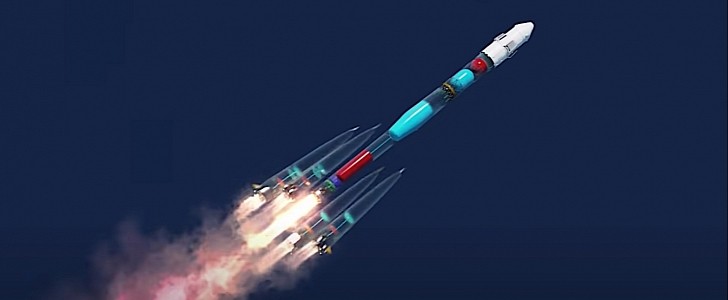For the past decade, the unsung hero of human space exploration efforts was the Russian Soyuz rocket. In between the retirement of the American space shuttle and the arrival of the fan-favorite SpaceX Crew Dragon, the Soyuz was the only vehicle capable of carrying people to the International Space Station and back, no matter their nationality.
Soyuz is a family of rockets that came to be at the height of the cold war and space race, in the mid-1960s. Like most rockets made back then (and most others still in use today), the Soyuz is an expendable machine. Unlike them, it is one with a record number of flights to its name: over 1,900. That means roughly 34 launches per year since introduction, making the rocket the most used such workhorse in the world.
There is another side of the Soyuz coin, though. The Russian rocket went down in history as the first linked to a fatality in space exploration, after Soyuz 1’s Vladimir Komarov became the first human to die during a spaceflight. Sure, the rocket itself had nothing to do with the incident, as it was a parachute failure of the capsule that caused it, but history books care little about such details.
Even one of Soyuz’s final flights with American astronauts on board had some issues. In October 2018, American astronaut Nick Hague and Russian cosmonaut Aleksey Ovchinin survived an emergency landing of their capsule after the rocket’s first and second stages collided while en route to the ISS. Later in 2019, a Soyuz carrying a satellite was struck by lighting after takeoff, but didn’t stop it from reaching orbit.
Regardless how you look at it, the Russian Soyuz is a marvelous piece of technology. And if you ever wondered how things look inside it while it performs its duties, then the animation below, the work of an artist called Hazegrayart, gives you a perfect idea of that.
It shows a transparent Soyuz from the moment it lifts off, loaded with color-coded fuel - blue for LOX, red for kerosene, green for liquid nitrogen, and purple for hydrogen peroxide. You can see the fuel being used up as the simulated rocket gets higher and higher, then the separation of stages, and, toward the very end, the inside of the capsule on top, revealing three astronauts that seem to float above the Earth.
There is another side of the Soyuz coin, though. The Russian rocket went down in history as the first linked to a fatality in space exploration, after Soyuz 1’s Vladimir Komarov became the first human to die during a spaceflight. Sure, the rocket itself had nothing to do with the incident, as it was a parachute failure of the capsule that caused it, but history books care little about such details.
Even one of Soyuz’s final flights with American astronauts on board had some issues. In October 2018, American astronaut Nick Hague and Russian cosmonaut Aleksey Ovchinin survived an emergency landing of their capsule after the rocket’s first and second stages collided while en route to the ISS. Later in 2019, a Soyuz carrying a satellite was struck by lighting after takeoff, but didn’t stop it from reaching orbit.
Regardless how you look at it, the Russian Soyuz is a marvelous piece of technology. And if you ever wondered how things look inside it while it performs its duties, then the animation below, the work of an artist called Hazegrayart, gives you a perfect idea of that.
It shows a transparent Soyuz from the moment it lifts off, loaded with color-coded fuel - blue for LOX, red for kerosene, green for liquid nitrogen, and purple for hydrogen peroxide. You can see the fuel being used up as the simulated rocket gets higher and higher, then the separation of stages, and, toward the very end, the inside of the capsule on top, revealing three astronauts that seem to float above the Earth.













